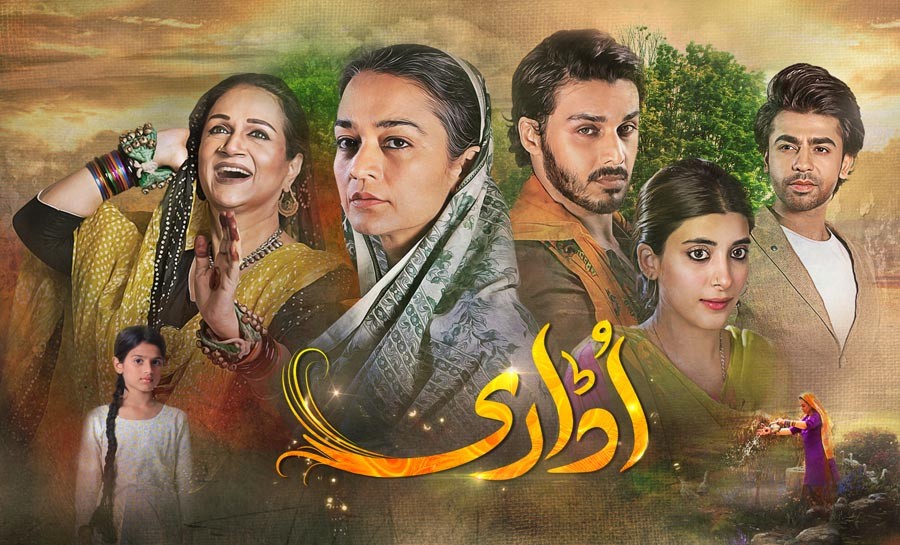
The digital model is the only way to inject fresh content into a market that will stay stagnated till the traditional television model relying on adverts is considered primary and central

An interesting thing I have noticed of late about my television-loving mother is that she rarely has HUM TV on in the family lounge. A year ago, when she was oblivious to the joys of content streaming on her cell phone, she remained torn between her desire to be entertained by soaps and the urge to stay informed through news channels.
Her discovery of YouTube seems to have solved this quandary. News and political commentary is time-bound, it’s a rare news show that retains its relevance once the news cycle moves on, but the fictional universe of weeping Pakistani women is ever eternal, its pathos even more potent when viewed in uninterrupted streaming.
HUM TV’s YouTube channel is currently subscribed by nearly 200,000 subscribers, which is a fraction of the people who watch the channel on television. In the same vein, episodes of the hugely popular recent play Yaqeen Ka Safar have an average of 2 million hits online, much lower than their viewership on television, but still not a negligible number. However, this content is made available for free on YouTube by the channels themselves, revealing how big media conglomerates are still not tapped into the digital market and its possibilities for income generation. They may earn a bit from giving their content to Netflix but their YouTube activity produces almost zero financial advantage.
This goes to show that the Pakistani drama industry still considers its primary audience television viewers planted in front of their static television sets, patiently trudging through ads or impatiently switching channels to avoid them. For them, the simple and straightforward way of revenue generation still remains advertisement money.
But as the conversion of my 75-year-old mother to YouTube indicates, the future of television is also digital, and even in Pakistan more viewers will migrate to online platforms in the next decade for greater convenience and uninterrupted viewing. In the West, there are channels that have non-advertisement models, chief of which is the subscription prototype of HBO, i.e, you pay a certain sum of money to access a channel without ads.
HBO had 49 million subscribers in the United States and 130 million worldwide as of 2016, generating $1.93 billion in revenue. This non-dependence on ads also means more experimental and edgy content. HBO is the creator of Sex and the City, The Wire, The Sopranos and Game of Thrones, some of the most seminal television shows ever, both critically acclaimed and wildly popular.
Read also: Mark it as art
Currently in Pakistan most adventurous drama pitches that push the possibility of content and style are rejected by mainstream channels as being unsaleable. This short-sighted view of things reveals a media elite out of step with the zeitgeist.
Sure, the drama industry is making big money without needing to look ahead but the country’s elite that is spending money on ever-mushrooming shopping malls in cities, eating and drinking at high-end cafes and restaurants, flying in droves to Dubai (300,000 Pakistanis flew to Dubai this year for New Year’s Eve), having lavish hashtag weddings, downloading torrents and watching Netflix are craving for Pakistani content that represents them.
There are also working-class women who are standing behind counters in these malls, the skyrocketing rate of khulaa across class divides (the ultimate assertion of female independence), the buying power of a new generation of women, a freer mingling of the sexes without the spectre of shame and adultery that Pakistani drama is unwilling to acknowledge, unable to capture a language that is current, urban and doesn’t ring false to youthful ears.
The digital model is the only way to inject fresh content into a market that will stay stagnated till the traditional television model relying on adverts is considered primary and central.
According to statistics provided by Pakistan Telecommunications Authority (PTA) there were a total of 44 million social media accounts in Pakistan in 2016. That opens up another opportunity for marketing and producing television content, since according to international reports it is very likely that Facebook, YouTube and even Twitter will want to license network programming, using the vast storehouse of knowledge they have about their users to match the right people to the right programming.
Of late, another marketing model that has worked in terms of producing better content has been sponsorship by NGOs. Udaari, co-produced by Kashf Foundation, an NGO whose slogan is ‘Financial Services for All in Poverty. Free and Gender Equitable Society,’ was one of the few truly forward-looking Pakistani plays. It is sad though that the money used to produce it had to come from Canada. This showed that the problem isn’t that progressive content is not financially viable or popular in Pakistan but that those at the helm of affairs in private channels lack vision.
It is interesting to note that Momina Duraid, creative head of HUM TV co-produced Udaari upon getting sponsorship from international sources but espouses regressive values in the plays she chooses to produce herself, plays that are reliant solely on Pakistani adverts.
Mainstream advertising is not always a bad influence on quality content though, particularly when it comes to reality-based programming. Some branded Pakistani shows have done a lot to bring good content to viewers, notable amongst these is the subtly produced travel show National Ka Pakistan, a compelling travel show whose product placement remains unintrusive and classy.